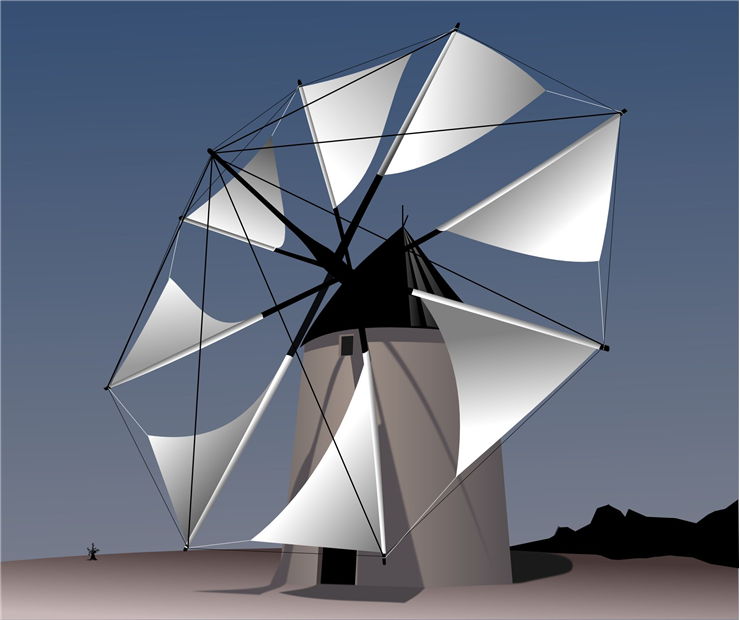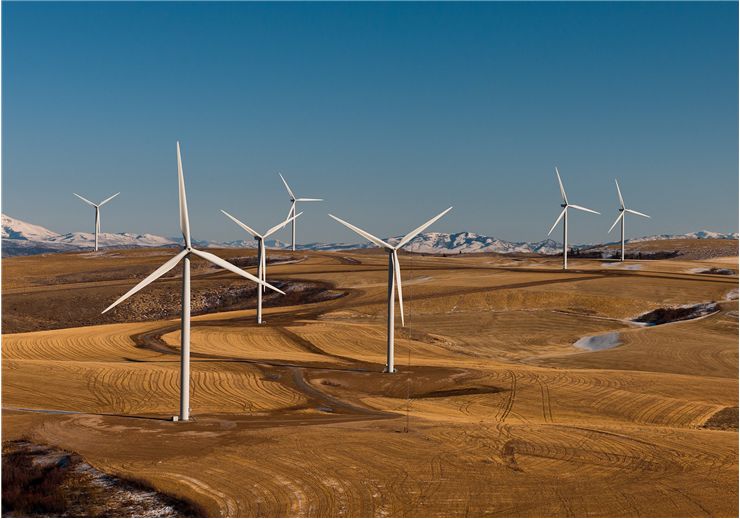History Of Wind Power and Wind-Powered Machines
The fact that wind can be used as source of power did not go unnoticed by our ancestor who started to devise first plans for making sails even as far back as 6 thousand years ago. With modern archeologist and historians being certain that first sailing ships made their first journeys some in 3,500 BC, the use of wind power in ancient civilizations started being more and more common as centuries went by. Babylonian rulers of 2nd millennia BC were first to start planning to harness wind power to power windmills that could move water from one place to another. Sadly, their plans were not realized, and first confirmed device that used wind to power a mechanical machine was devised in 1st century AD by Greek engineer Heron of Alexandria. He used simple windmill wheel to catch force of wind and power a musical instrument.
The arrival of first wind-powered machine however did not immediately mark the start of the era of windmills. While sailing ships continued to evolve and be more and more efficient in converting wind into movement, windmills took a slower approach. First truly reliable windmill design arrived between 7th and 9th century in the area between modern Afghanistan and Iran. From there windmills started to be built all around the Muslim world, and they reached India and China before first models arrived to continental Europe. These early designs featured both horizontal and vertical windmills, with varied use-case scenarios that involved all the “traditional” jobs of grinding grain and transferring water (irrigation, water pumping from deep wells, drainage of water for both agriculture and salt production).
Between 11th and 16th century, Europe started to take much more serious approach on harnessing power from wind. Windmills become integral machines that powered various industries in several European countries, and territories of England and Central Europe started being homes of around 100 thousand windmills that were used for countless jobs. During the same time, the art of sailing became much more advanced with the discovery of navigational tools that enabled sailors to determine their position even though they were in the open sea.
With the arrival of 15th century Europe entered into the Age of Discovery, which was powered almost solely with wind power. Ships from Portugal, Spain, France, Italy, Netherlands and England sailed all across the world, discovering Americas, water route to India, Australia, Pacific Ocean, and many newer trade routes. Wherever new settlers landed, they brought with them not only supplies needed for making of new settlements, but also knowledge how to harness the power of wind.
After 16th century, windmills of all shapes and types became being made all around the world. By 19th century when steam and electricity started being dominant source of power for industry, windmills were created in three most basic shapes – Post Mills that had fixed sail wheel that could not rotate, Tower Mills that were built from stone or bricks and had rotating wooden cap that could rotate and take advantage from wind that changes direction, and finally Smock Mills who had strong base and wooden body which also featured rotating roof. During the peak of their popularity, these three windmill types were responsible for more than 200 thousand mills in Europe, while United States used over 600 thousand of wind-powered water pumps in 1930.
After proliferation of electricity and internal combustion engines, the need for wind powered machines reduced dramatically all around the world, but some wind-powered machines never became obsolete. For example, water pumps powered by wind are extremely self-sufficient, requiring small amount of wind to start pulling water from deep wells, and requiring very little maintenance. Similarly, wind turbines that create electricity became much more attractive after it became apparent that oil prices will become more and more expensive after 1970s.

